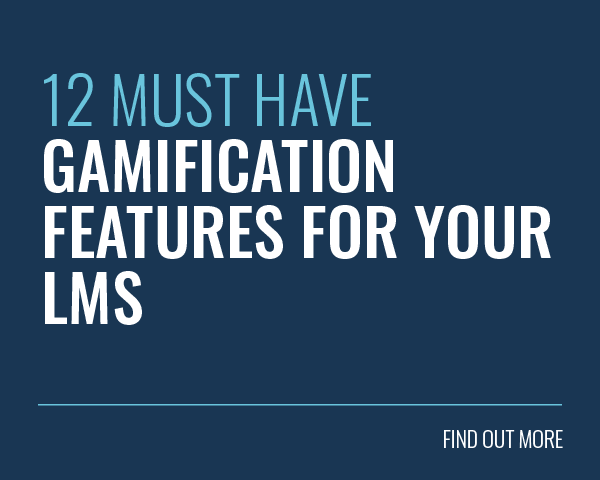 Augmented Reality has been plucked from the distant future to become a staple of our everyday lives.
Augmented Reality has been plucked from the distant future to become a staple of our everyday lives.
In construction, employees can now use augmented reality to place 3D models of prospective designs on land. There’s a lot of try-on apps that allow customers to get a glimpse of products before buying them. The tourism industry is introducing AR to familiarise tourists with local highlights without the need of a tour guide.
Analysts predict that from the year 2017 to the year 2025, Augmented Reality is expected to grow from $3.5 billion to $198 billion USD!
The truth is, if it hasn’t already, AR is set to infiltrate most industries. This includes Learning and Development. In fact, when you combine the amazing visuals and the endless content you can include, we’d go as far as to say it might just change the L&D industry more than any other.
If you want to know the 411 on AR, and be the hippest L&D professional in the room, then get ready to be fully immersed…
5 Examples of Augmented Reality in Business
As mentioned, AR is already saturating a flurry of industries.
Before we touch on AR in Learning and Development, here are just some examples of how different industries are benefiting from augmented reality:
1. Aviation Industry
From night vision to 3D audio and target tracking for fighter jets, there’s plenty of scope for AR and aviation. Airport customers can now use AR to help find their way around hectic airports. Aviation AR is expected to rise 60% by 2025.
2. Automotive Industry
Automobile manufacturers are using AR to help with the prototyping and assembling of vehicles. AR is also being used to help mechanics repair vehicles with agility and precision.
3. Bar and Restaurant Industry
As if the prospect of drinking a cocktail isn’t exhilarating enough, AR cocktails are now an actual thing! By downloading an app, your beverage comes to life with a whirl of AR wizardry all tailored to the ingredients and the name of the drink. This can include the story behind the product plus some funky illustrations too.
4. Dental Industry
Dentists can incorporate the visual power of AR to aid them in the construction and rebuilding of a patient’s new smile. It can also be used to show patient’s the potential outcome of their work (just in case they don’t want to look like Bugs Bunny).
5. Medical Industry
Relying on microscope oculars to operate can be a daunting task for surgeons. They can now use augmented reality to gain a high-resolution 3D interpretation of their patient. Naturally, this helps with accuracy; something that can literally save lives.
5 Examples of Augmented Reality in Learning and Development
Okay, now for the exciting stuff! By incorporating stunning visuals, on-screen content and immersive environments, augmented reality has taken the training world by storm!
A recent economic research study predicted that spending on augmented reality in corporate training will double from now until 2021. This will potentially result in well over $200 billion USD being spent on AR technologies from now.
Additionally, research from Boeing shows that the use of AR in corporate training, employees have demonstrated a 90% improvement in first time quality and a 30% reduction in the time used to complete the job.
Check out our top five examples of how AR is already being applied in training, be it during the onboarding process or how it can benefit an already established skilled expert:
1. Classroom Education

With all the excitement swirling around in the digital age, it seemed that education hadn’t really caught up – that is until now. Pupils haven’t been this eager for class since the introduction of the calculator!
So what does AR in the classroom currently look like? World Brush allows the pupils in art class to paint the world around them, for example. By incorporating this into learning, art teachers can assign learners to attach 3D drawings to real-life objects.
Schools aside, classroom learning is still rife within work training. Instructors can use AR to share documents, or to scan items that present units or prompt gamification.
2. Frontline Workers
We’ve briefly touched on the medical industry benefiting from AR during actual practice, but what about the training side? AccuVien is a medical AR device that maps out the veins in a patient’s body. This is done by simply scanning the app over the required area. After using the tool, 81% of nurses claimed that using the device helped them to cannulate better (locate the vein).
Trade workers are also gaining from the training powers of AR. Plumbers, electricians and gas engineers for instance, can use AR in training to reinforce technical knowledge with on-screen information. Like stabilisers on a bike, this kind of AR training is fab for building muscle memory until the person is fully confident.
Naturally, using augmented reality in training trades means less risks involved too.
3. Soft Skills Training
Did you know, 67% of HR employees hold back job offers because of a lack of soft skills?
Everybody working in an office environment knows someone who could benefit from this! (Especially in IT, right?!) There are a list of unwritten rules to abide by and if they are not met, then you may as well pack up your singing flower and your Newton’s Cradle before lunch time.
Enhancing one’s soft skills will often make settling in a smoother journey. Thank goodness then that AR has come to the rescue. From body language to mannerisms, to teamwork, problem-solving and more; AR headsets and apps are being used to present the learner with scenario based training that offers a more experiential based solution.
An example may be a sales trainee using AR to hone their sales techniques. Once your AR app has scanned a product, info about said product can appear on-screen. This can include dimensions, price, release date and much more. Once the sales pitch has been memorised, then it’s time to release your salespeople into the wild!
4. Retail Training

IKEA are using AR to help customers view what products would potentially look like in their houses. This type of AR is also being used the other way around, namely, in training. Employees can use AR apps to divulge information around certain products in the store.
Using AR in this way will hopefully mean they will be less frustrations on the shopfloor, as the employees will be more informative.
The use of AR product layering in retail is becoming more and more common. This is where a product can be superimposed onto a customer to let them know how it looks before purchase.
This type of AR can help with customer handling, as trainees can gain a visual representation of differing scenarios they may encounter.
5. Health and Safety Training
AR technology is a fantastic way to communicate your health and safety training. Instead of sifting through dusty training manuals, onboarders can now get interactive with their knowledge of fire safety, electrical hazards, unguarded machinery, poor postures, workstations, heavy lifting and more.
Another specific use case could be identifying the hazards a shop worker may experience on the floor. Be it spillages, loose products on the floor, or over stacked items; AR provides a safe environment in which this can be acted out.
If you’ve ever completed a driving hazard course, then you’ll know exactly what this involves. Real-life scenarios with AR graphics and content pasted on top. This puts the learner in the heart of the scenario.
Final Words
AR is already enhancing customer experiences in bars and restaurants, high-street shops. It’s already benefiting surgeons, dentists and pilots, to name a few. But just like when Black Panther joined forces with The Avengers, augmented reality is quickly becoming crucial to the (learning and development) plot.
From engaging students in the classroom to assisting trainee doctors; L&D has become an avid endorser of the powers of augmented reality!
One reason we’ve taken so naturally to AR is that it’s all based around mobile and mobile technology.
Want to find out more about the future of mobile learning? Download our free guide, ‘Mobile Learning and the Future of L&D’.








